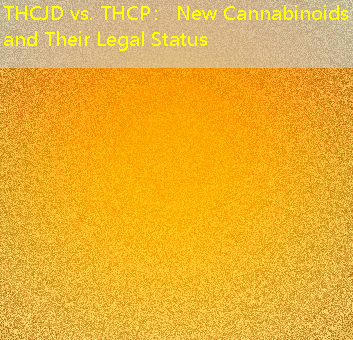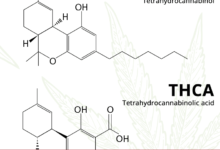THCJD vs. THCP: New Cannabinoids and Their Legal Status
As the cannabis industry continues to evolve, new cannabinoids are being explored for their unique properties and potential therapeutic benefits. Among these, THCJD (Tetrahydrocannabiorcinol) and THCP (Tetrahydrocannabiphorol) have attracted considerable attention. This article delves into the characteristics, user experiences, competitive comparisons, advantages, disadvantages, and target user demographics for both THCJD and THCP.
Characteristics
THCJD is a lesser-known cannabinoid derived from hemp, boasting up to 19 times the potency of delta-9 THC. This heightened potency may translate into stronger psychoactive effects, thereby delivering more intense experiences with smaller doses. On the other hand, THCP is characterized by its exceptionally long alkyl side chain, which allows it to bind more effectively to the CB1 receptors in the brain, potentially resulting in effects up to 30 times stronger than THC.
User Experience

Users report that both THCJD and THCP offer enhanced psychoactivity but differ in their effects. THCJD is noted for producing a euphoric sensation coupled with a heightened sense of relaxation, making it appealing for those seeking recreational and therapeutic benefits. Users cite its smooth onset and prolonged effects. Conversely, THCP is often described as providing a more cerebral high that enhances creativity and euphoria, making it ideal for social gatherings or artistic endeavors. However, due to its potency, new users should approach THCP with caution.
Competitive Comparison
When compared to other cannabinoids like CBD and delta-8 THC, THCJD and THCP stand apart due to their higher potency. While delta-8 THC offers milder psychoactive effects suitable for beginners, THCJD and THCP cater to those seeking more pronounced experiences. Furthermore, both cannabinoids are less understood and less researched, which may deter those seeking reliable therapeutic applications.
Advantages and Disadvantages
Advantages:
– THCJD:
– Potentiates effects with lower doses.
– May relieve symptoms associated with stress and anxiety.
– THCP:
– Extremely potent, ideal for experienced users.
– Potentially greater therapeutic benefits due to high receptor affinity.
Disadvantages:
– THCJD:
– Limited research on long-term effects.
– High potency may not be suitable for novice users.
– THCP:
– Can lead to overwhelming experiences if misused.
– Legal status may create confusion, given the variability in regulations.
Target User Demographics

Both THCJD and THCP appeal primarily to experienced cannabis users who are familiar with different cannabinoids and are seeking innovative and potent options. Recreational users, particularly those involved in creative endeavors or social settings, may find THCP especially appealing. Conversely, users seeking relief from stress, anxiety, or chronic pain might gravitate toward THCJD for its calming effects.
Legal Status
The legal standing of THCJD and THCP remains in flux as regulations around hemp-derived cannabinoids develop. While both are derived from legal hemp sources, their classification may vary from state to state. Users should stay informed about local laws and regulations before purchasing or using these cannabinoids.
Conclusion
In summary, THCJD and THCP present exciting new options in the ever-expanding world of cannabinoids. Their potent effects offer unique experiences, but caution is advised for those new to these substances. Understanding their characteristics, user experiences, and legal status is pivotal for potential users looking to enhance their cannabis journey.







